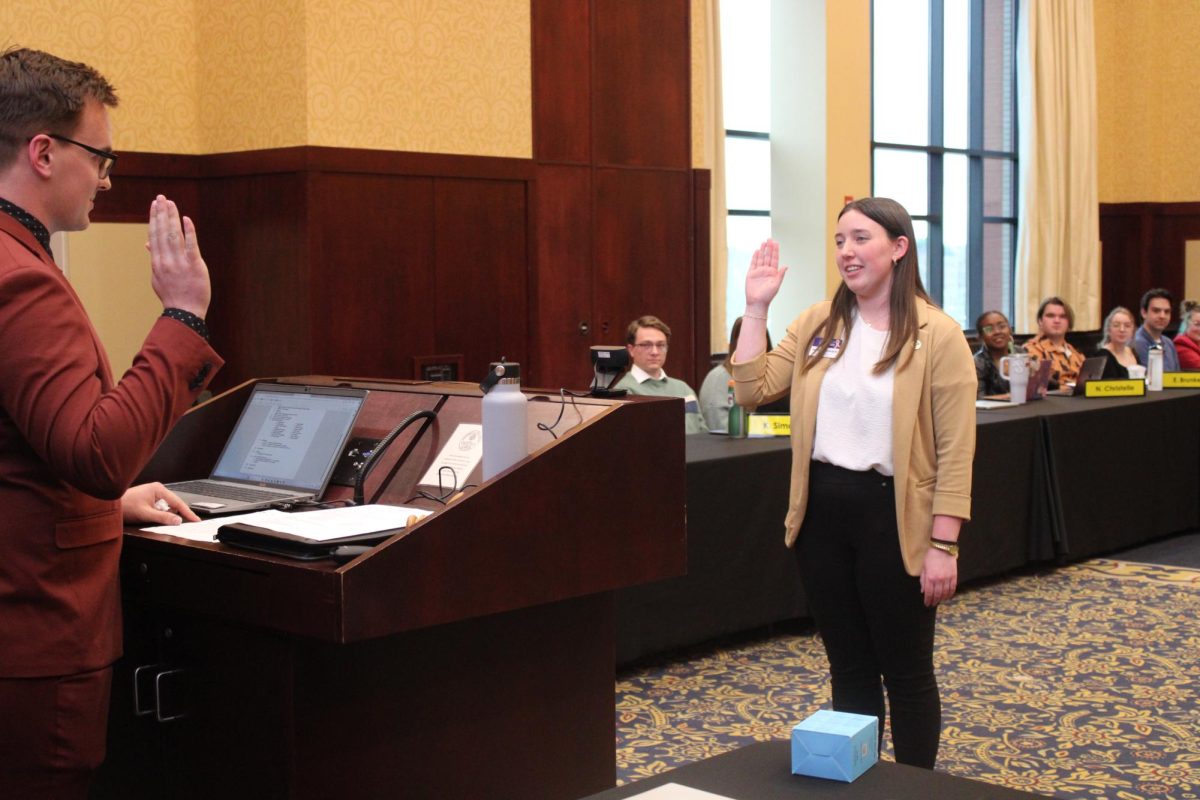University Police caught more pedestrians – mainly students – breaking traffic rules this past month in its safety grant program than during its one last fall, according to the department.
Compared to last fall’s safety grant program, police gave warnings to an average of two more pedestrians per hour this spring. Last fall police stopped about five pedestrians per hour for violations and seven per hour in the spring, Officer Doug Hubbard said.
Officers working the grant shifts give written or verbal warnings to people who are violating rules, such as not using a crosswalk or ignoring “don’t walk” signs.
At times the number of people violating pedestrian laws forced officers to only give verbal warnings, Hubbard said.
“You have one or two people stopped and see other people doing the same thing,” said Hubbard, who took part in several of the grant shifts.
The Pedestrian and Bicycle Safety program is a $6,000 grant from the state’s Department of Transportation to increase awareness and educate people about safety issues and traffic laws.
The department received two $1,000 grants last fall from the state for the same program. Due to its findings, it received funding for spring.
For the pedestrian safety program, Hubbard said police focused mostly on intoxicated walkers, which is a big safety concern for pedestrians.
This is partly due to intoxicated people crossing the street at night when several drivers also are impaired by alcohol, he said.
The bicyclist program, which still has three more shifts, did not involve intoxicated riders, Hubbard said. It was more about bicyclists not obeying regular traffic laws, he said, such as speeding down the campus hill.
Sophomore Drew Hawley received a written warning from a police officer who stopped him for speeding down the hill. He said he did not like how the officer stopped him without radar evidence of his speeding, but understood the program’s objective. Yet, Hawley said it will not change how he rides a bike around campus.
“I don’t think that it’s going to have any effect,” Hawley said, “because I’m going to slow down anyway.”
Since April 15 police gave 51 written and 33 verbal warnings to violating bicyclists in 24 hours, Hubbard said, which averages 3.5 warnings per hour.
People became more aware of their actions as the program continued. Police officers working the shifts also became more visible, Hubbard said.
“That’s part of our goal,” Hubbard said, “is to change people’s habits.”






